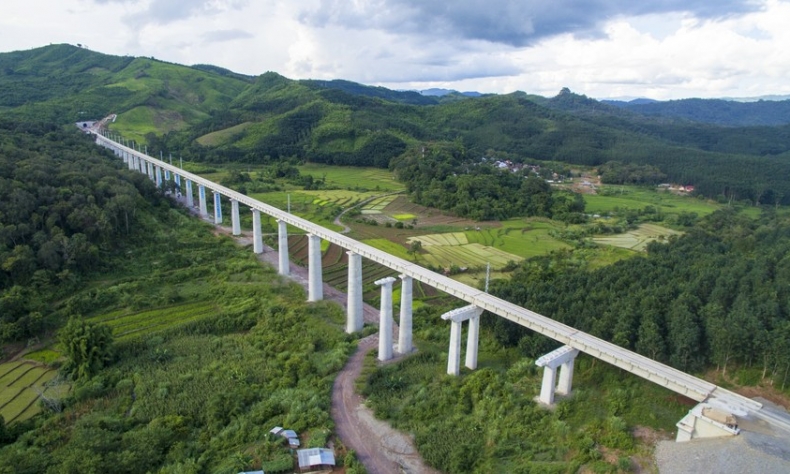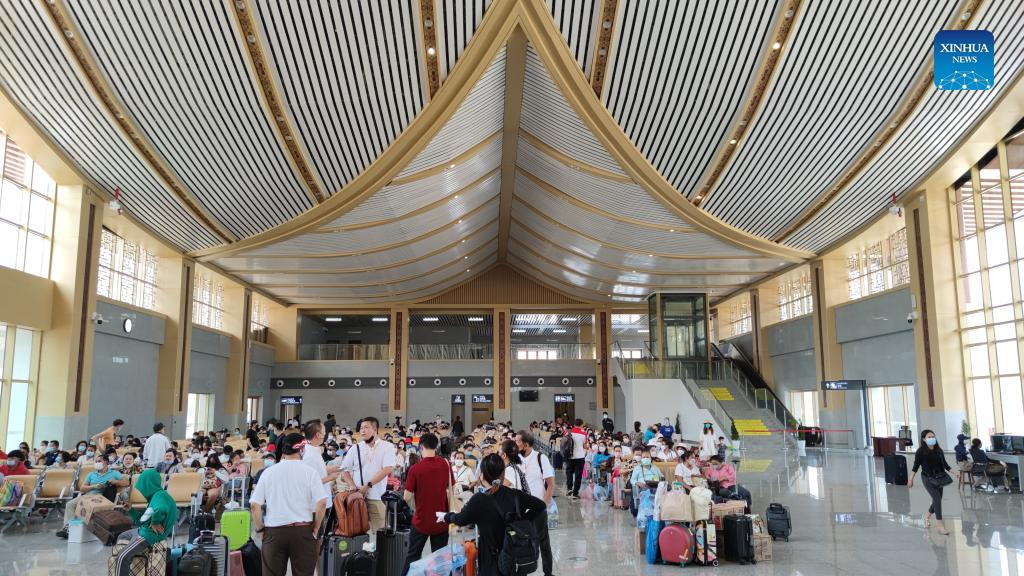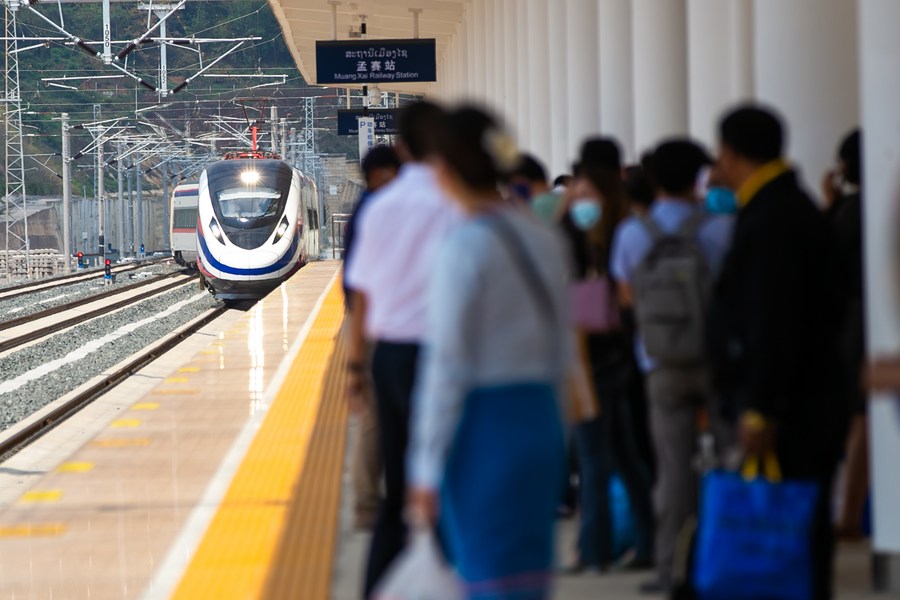Decoding the Success of the China-Laos Railway

A landmark project in building a China-Laos community of shared future, the CLR will make cultural and people-to-people exchanges more frequent and bilateral relations even closer.
Laos-China Railway Company has announced the addition of a slower-speed train to the existing high-speed trains, which starts service in March to meet growing passenger demand, according to a report in Laos’ daily Vientiane Times. As of February 22, nine pairs of trains had been added to the schedule for the Lao section of the China-Laos Railway (CLR) and nearly 150,000 passengers had made train trips within Laos on the rails. The CLR has become the preferred option for Lao people to get around. The rail line is so popular that weekend and holiday tickets are always hard to come by in both China and Laos.
In addition, the CLR has also delivered impressive performance in freight transport. As of January 17, a total of 59,500 tons of cargos worth 1.07 billion yuan (US$169 million) had been transported on the rail line. At present, business operators in nine provincial regions of China and more than 10 countries including Laos, Thailand, and Singapore along the Belt and Road are using the CLR for freight transport.
Three main factors have been driving the success of the rail service.
A Road to Development
Since it began operation, the CLR has played an important role in improving regional connectivity. The railway substantially shortens the travel time from Vientiane, Laos, to Kunming, China, and cuts transportation costs by 30 to 50 percent, tangible benefits for regions along the line. Bangkok Post commented that the CLR would make Laos more attractive to investors from China and other countries and help boost development of tourism, agriculture, mining, and other industries in Laos. Today, cargo transported by the rail link has expanded from rubber products, fertilizer, and general merchandise in its early days to a wider range of goods including electronics, communications equipment, photovoltaic components, textiles, vegetables, and charcoal. Many Chinese and Lao businesspeople have reported that the CLR has greatly improved the efficiency of bulk commodity trade between the two countries and facilitated bilateral economic cooperation. Thanks to the cross-border rail line, goods from Laos and other ASEAN member states are now being quickly transported to China and vice versa. The World Bank estimated that in the long term, the rail could help boost the national income of Laos by up to 21 percent annually.

A Road for the People
The CLR is providing great convenience to the people of China and Laos. The previous two-day road trip from Kunming to Vientiane has been transformed to a three-hour train ride. The original five kilometers of railway in Laos extended to more than 400 kilometers, connecting many cities in the country. The CLR also offers people in Pu’er and Xishuangbanna, two regions in southeast China’s Yunnan Province, access to train service for the first time. The comfortable ride on the rail line was praised by many social media users who had taken the train. Many have applauded the ride experience with excitement in videos posted online. Compared to the long, bumpy car journey, a train trip saves both time and energy, according to a photojournalist’s article published on thediplomat.com. He also described a scene in the Vientiane Station: Locals giving each other high fives to celebrate and many calling relatives in other regions to share their joy. As slower-speed trains at reduced fares become operational, the Lao people will get more choices when traveling on the CLR.

A Road of Friendship
Linking colorful Kunming to Vientiane, filled with the fragrance of Champa flowers, and abundant Xishuangbanna to romantic, peaceful Luang Prabang, the CLR has promoted friendship and cultural exchanges between the two peoples, contributing to a bright future for China-Laos relations. More schools in China have launched programs teaching the Lao language. An increasing number of cataract patients in Laos have received treatment thanks to closer healthcare cooperation. Extensive cooperation in vocational education has helped Laos build a stronger pool of talent. A landmark project in building a China-Laos community of shared future, the CLR will make cultural and people-to-people exchanges more frequent and bilateral relations even closer.
The CLR empowers people to enjoy traveling and goods to be transported efficiently. With the Regional Comprehensive Economic Partnership (RCEP) agreement coming into force this January, the rail service is expected to see steady growth in freight transportation and add even stronger impetus to regional development.
Zhou Xin is a scholar of international studies.
 Facebook
Facebook
 Twitter
Twitter
 Linkedin
Linkedin
 Google +
Google +










